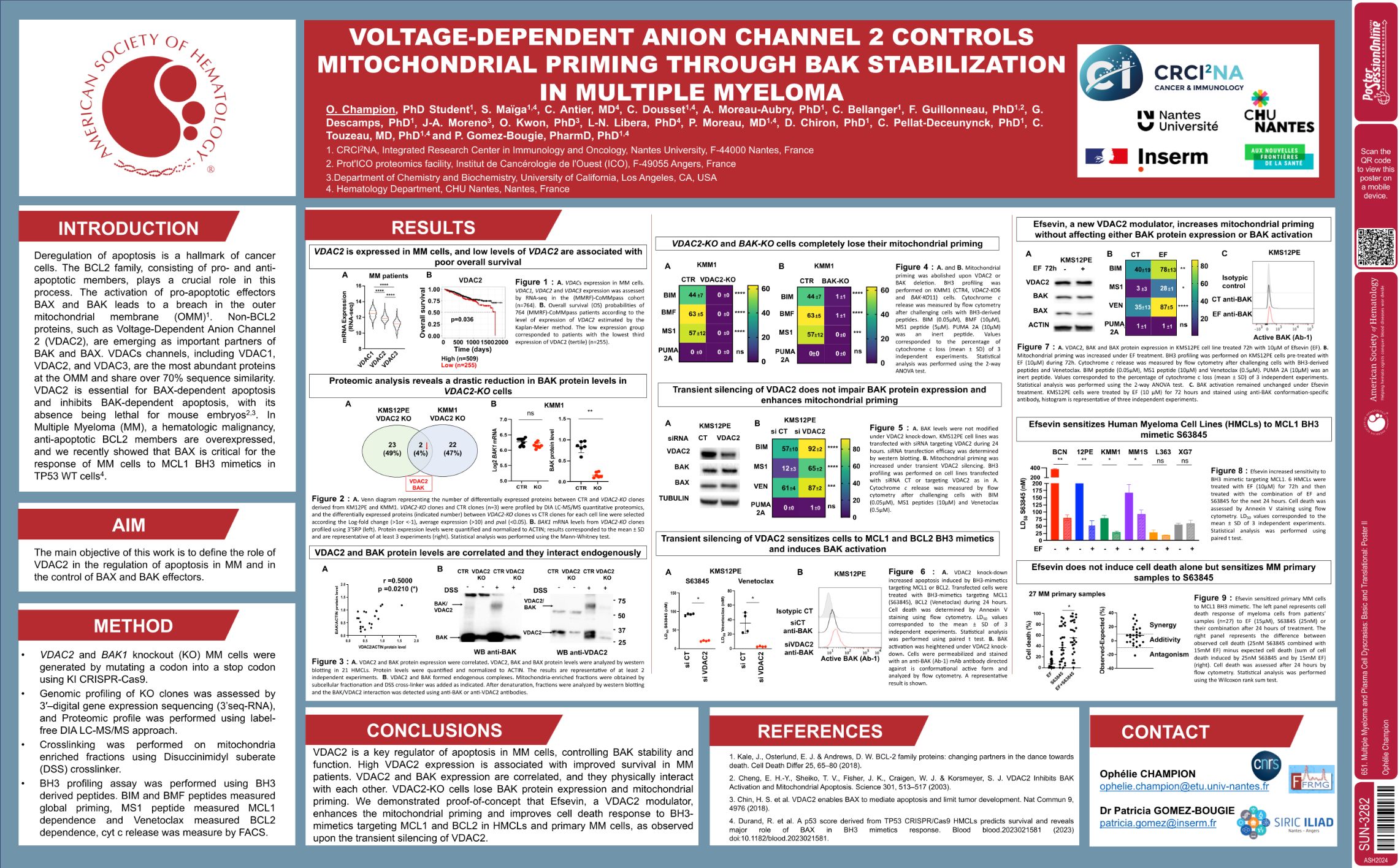
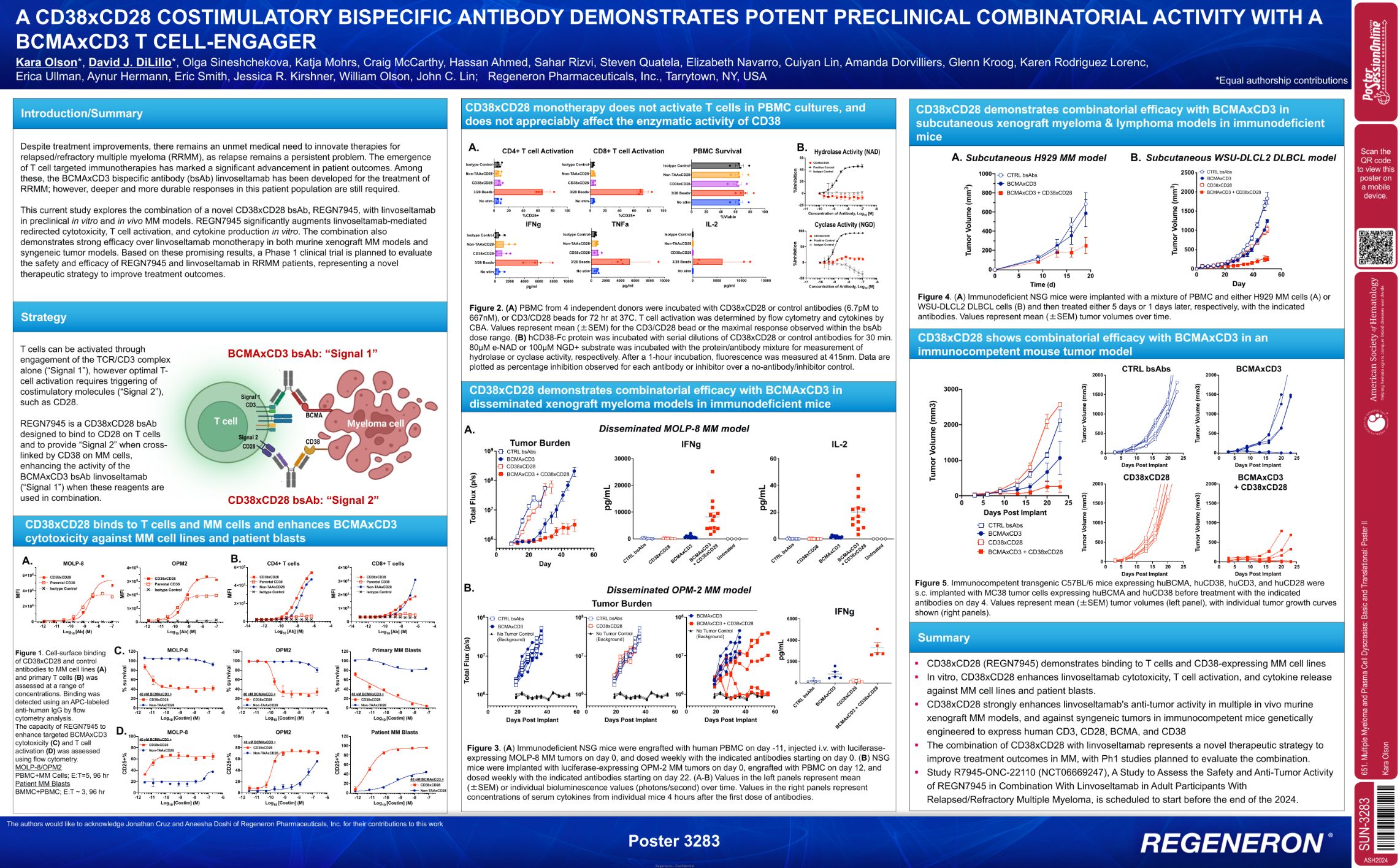
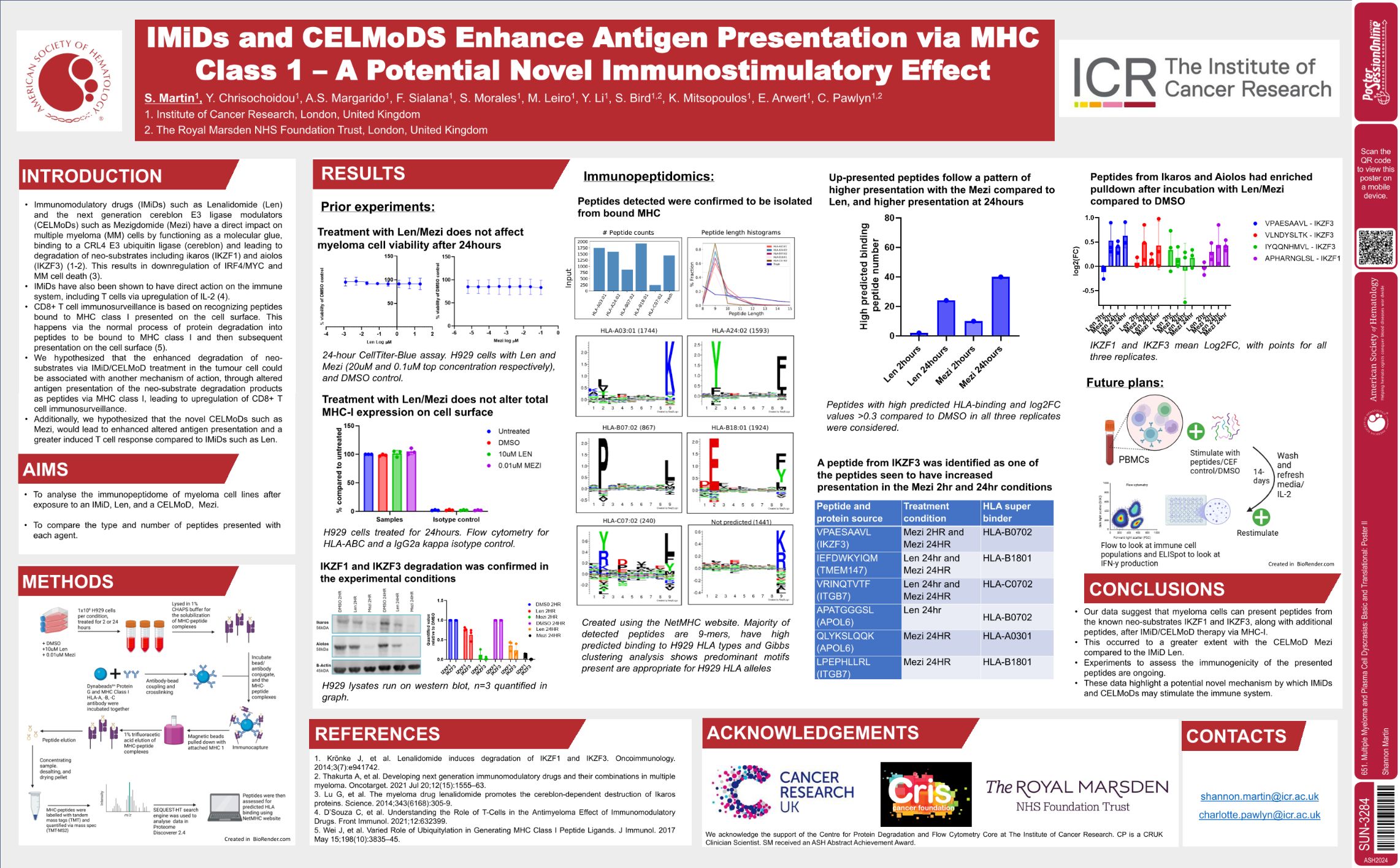
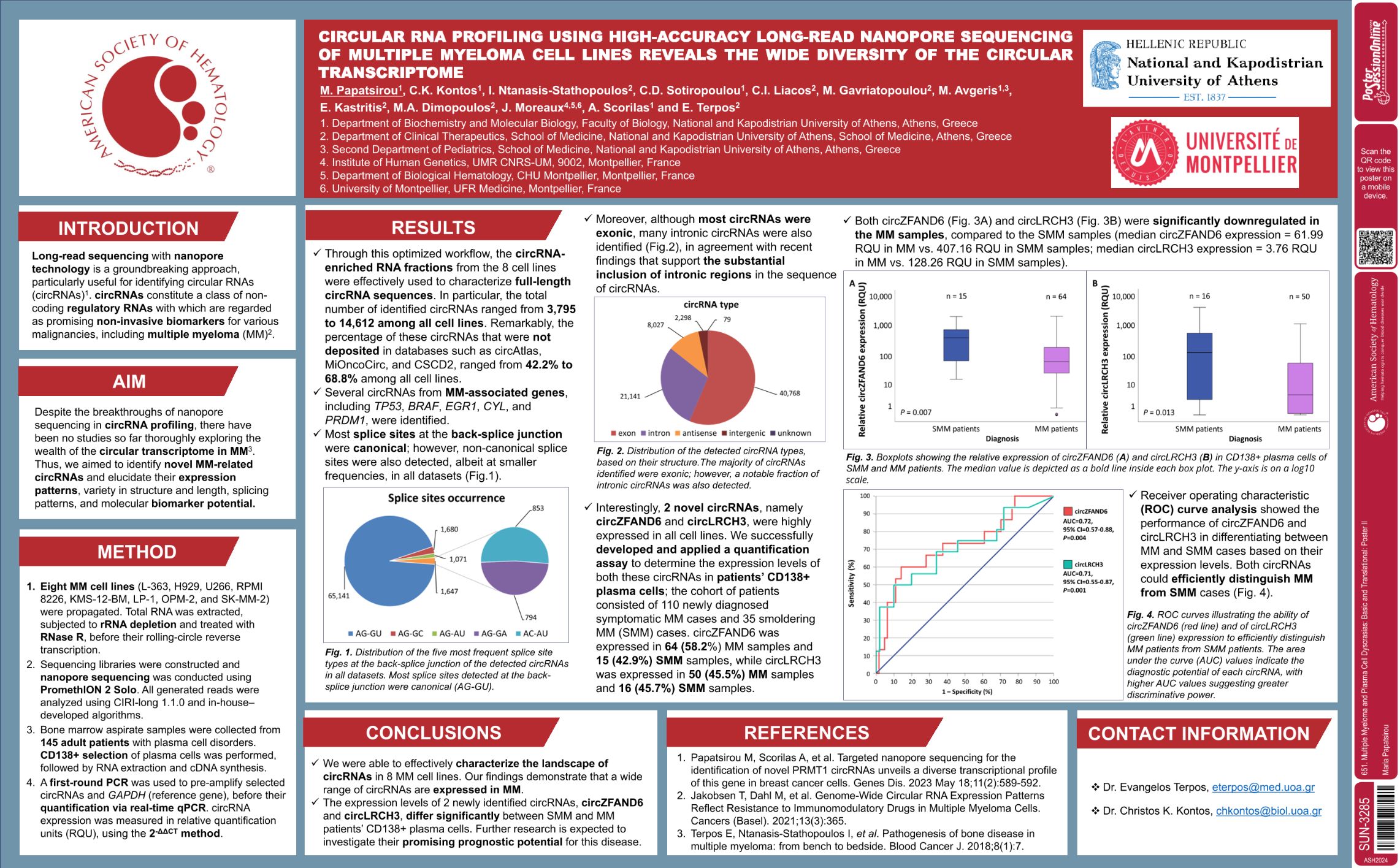
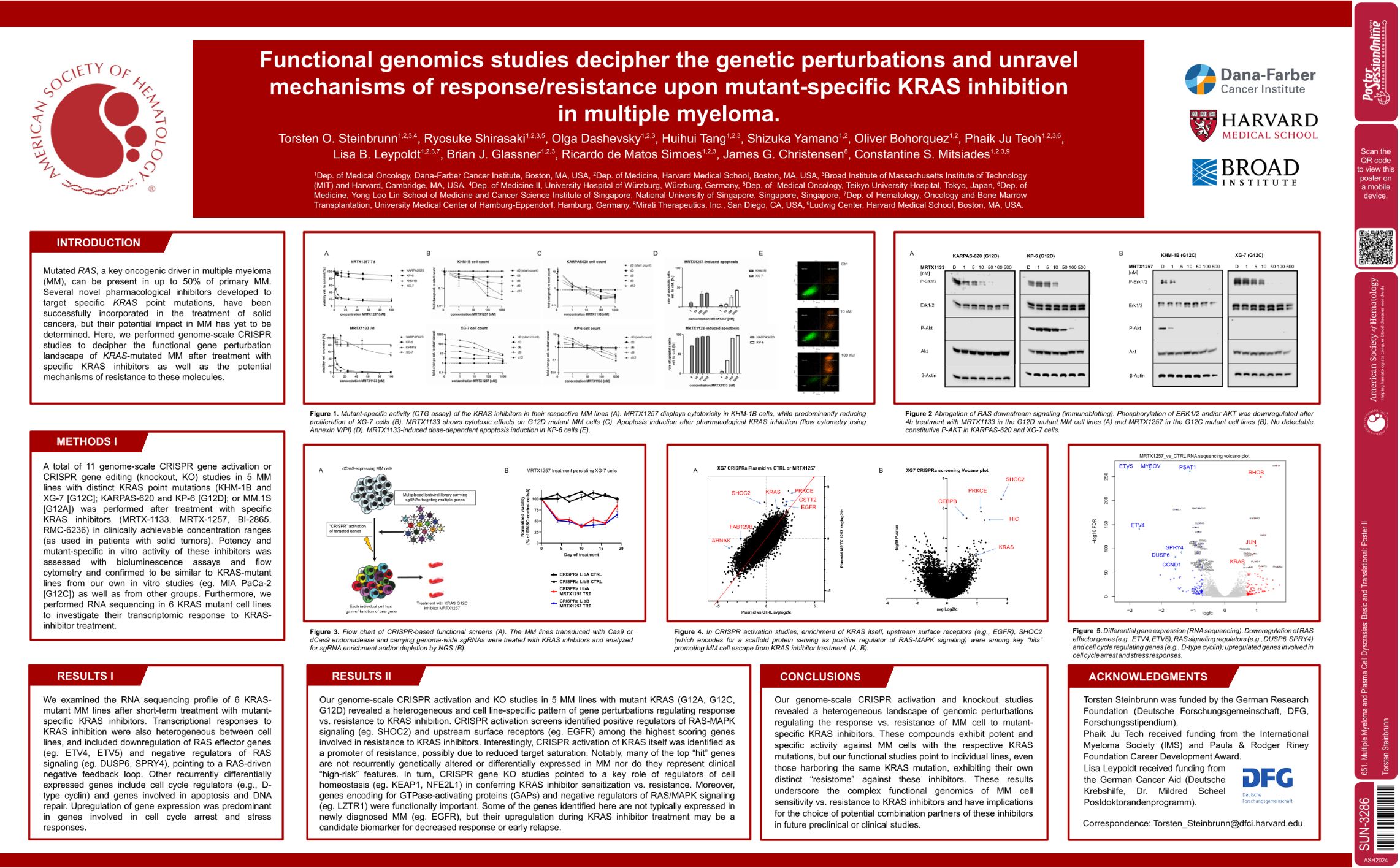
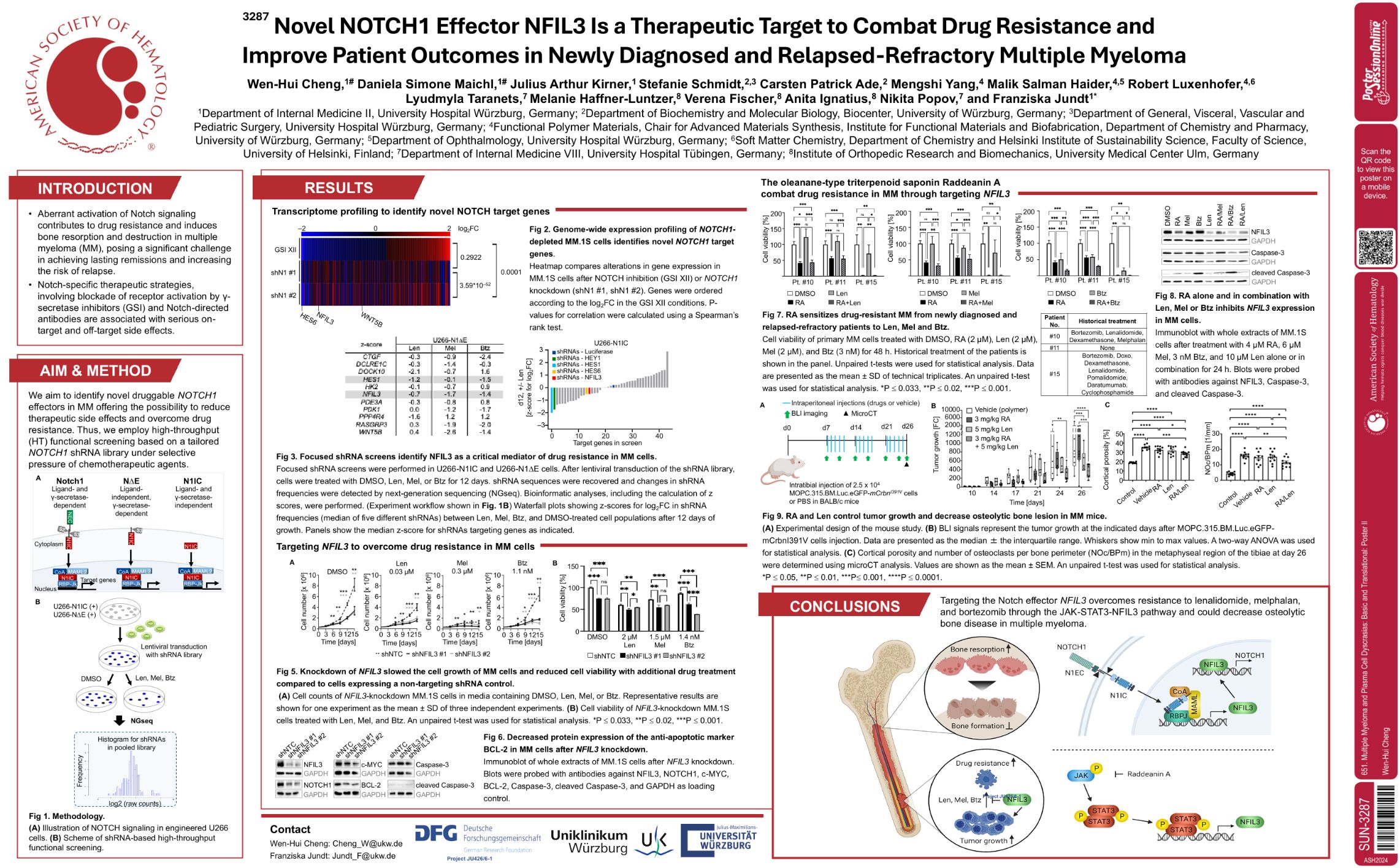
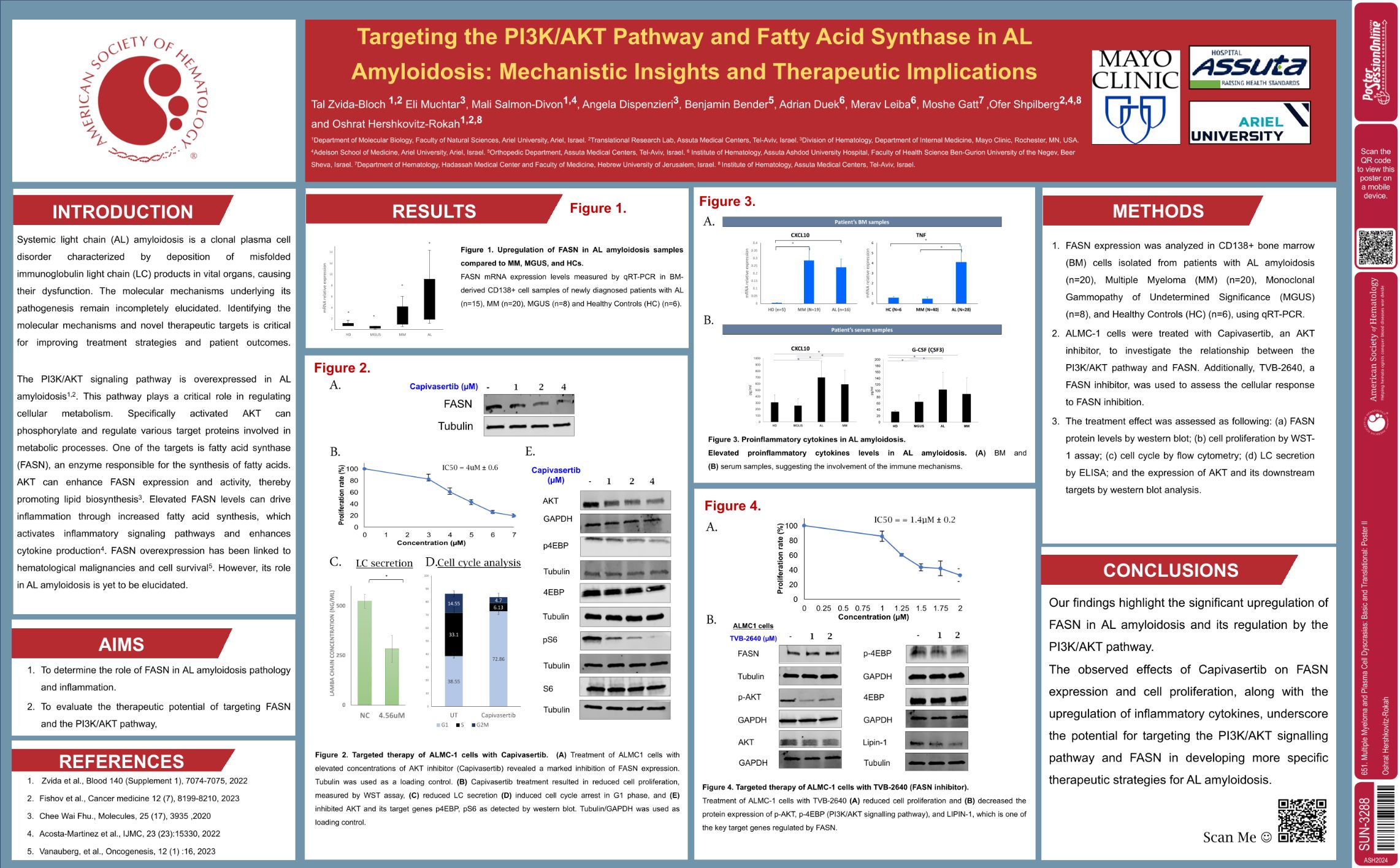
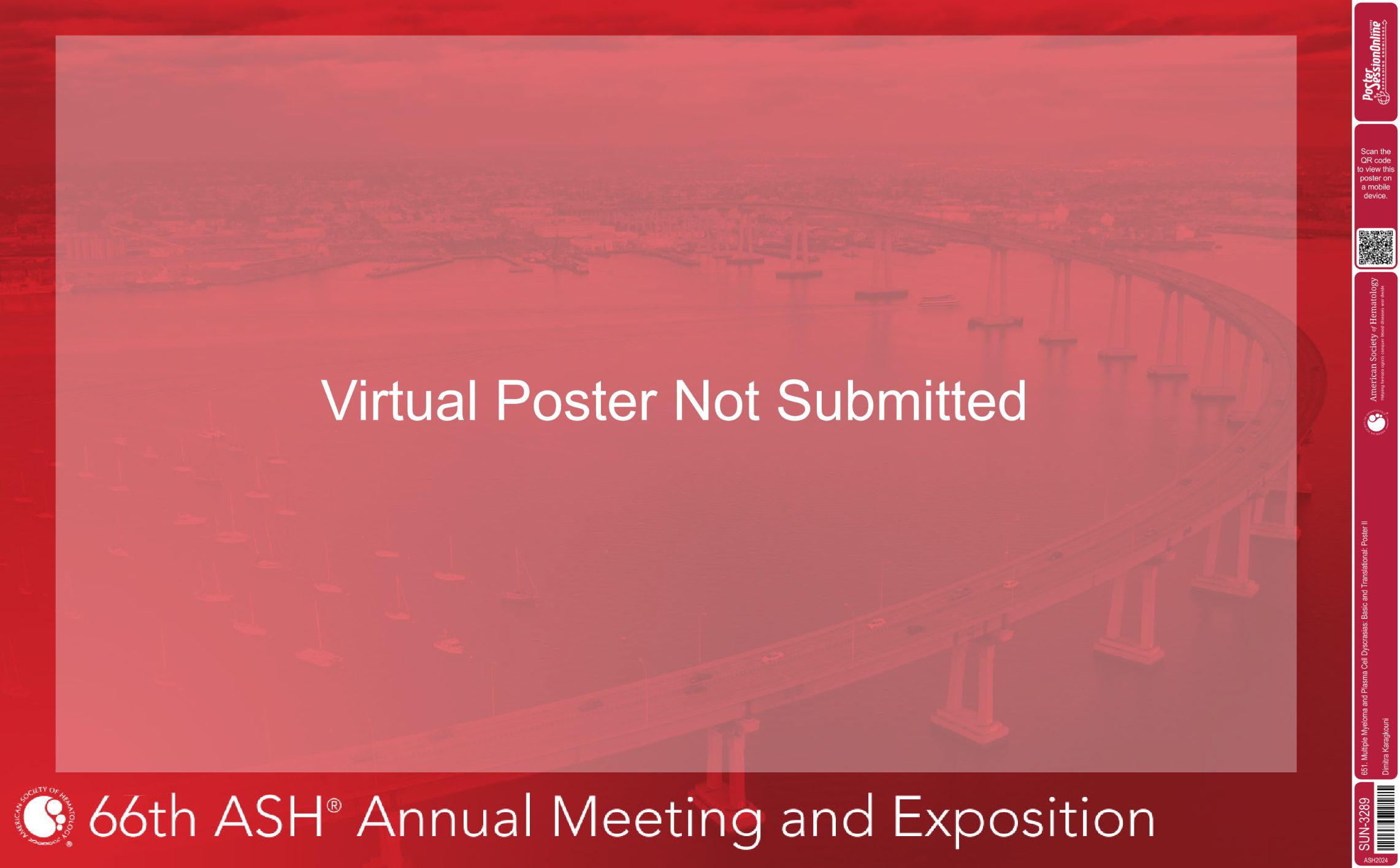
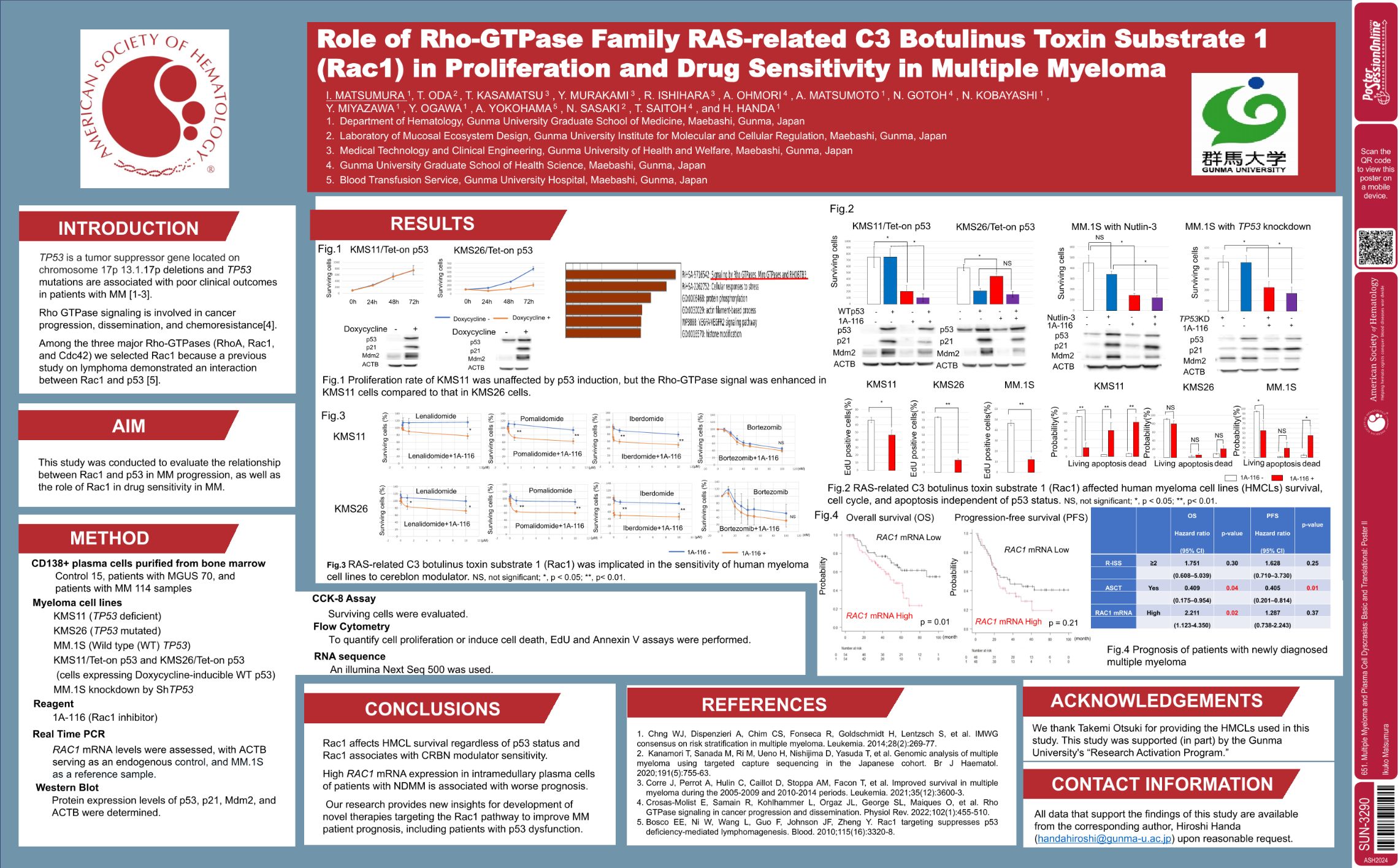
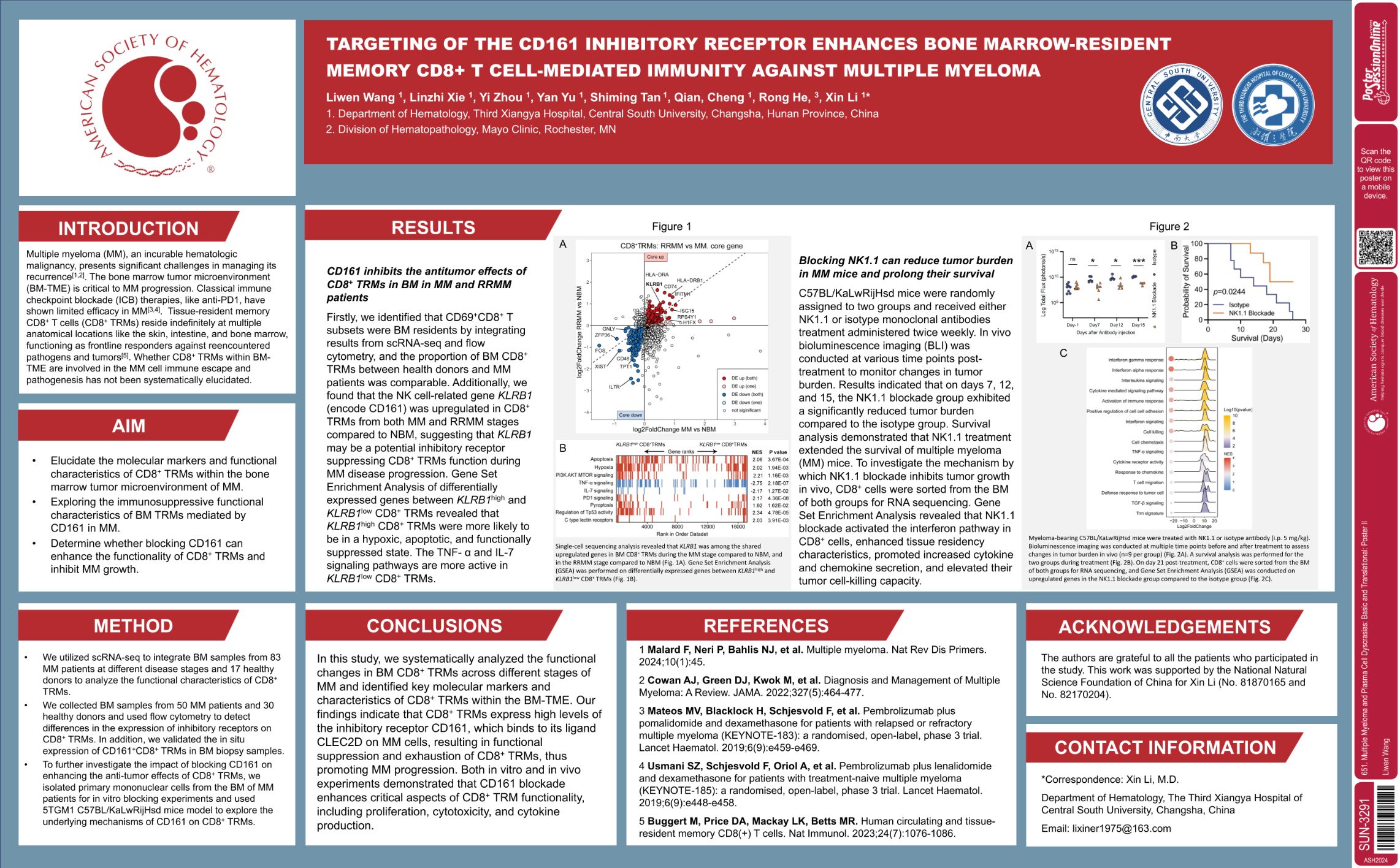
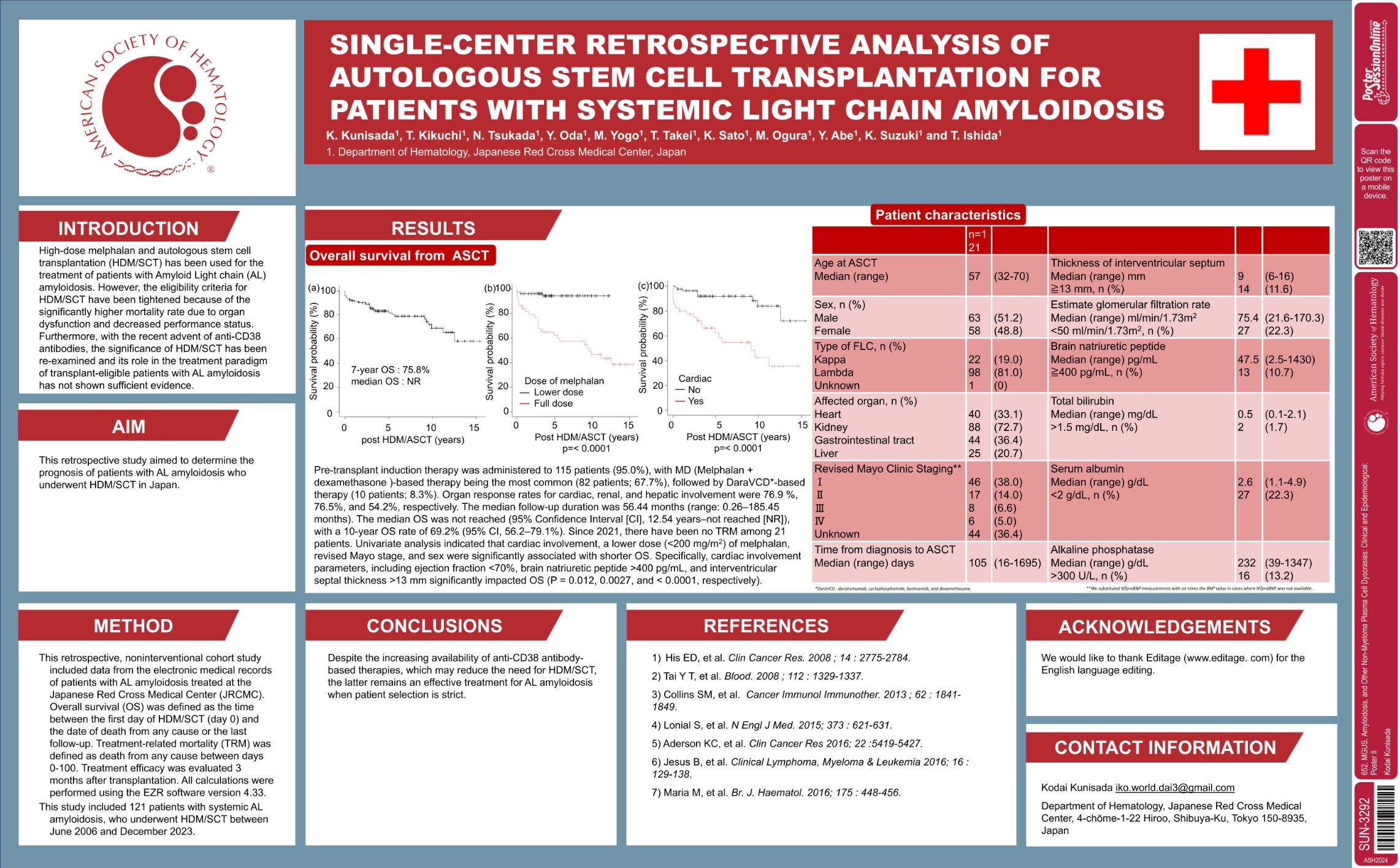
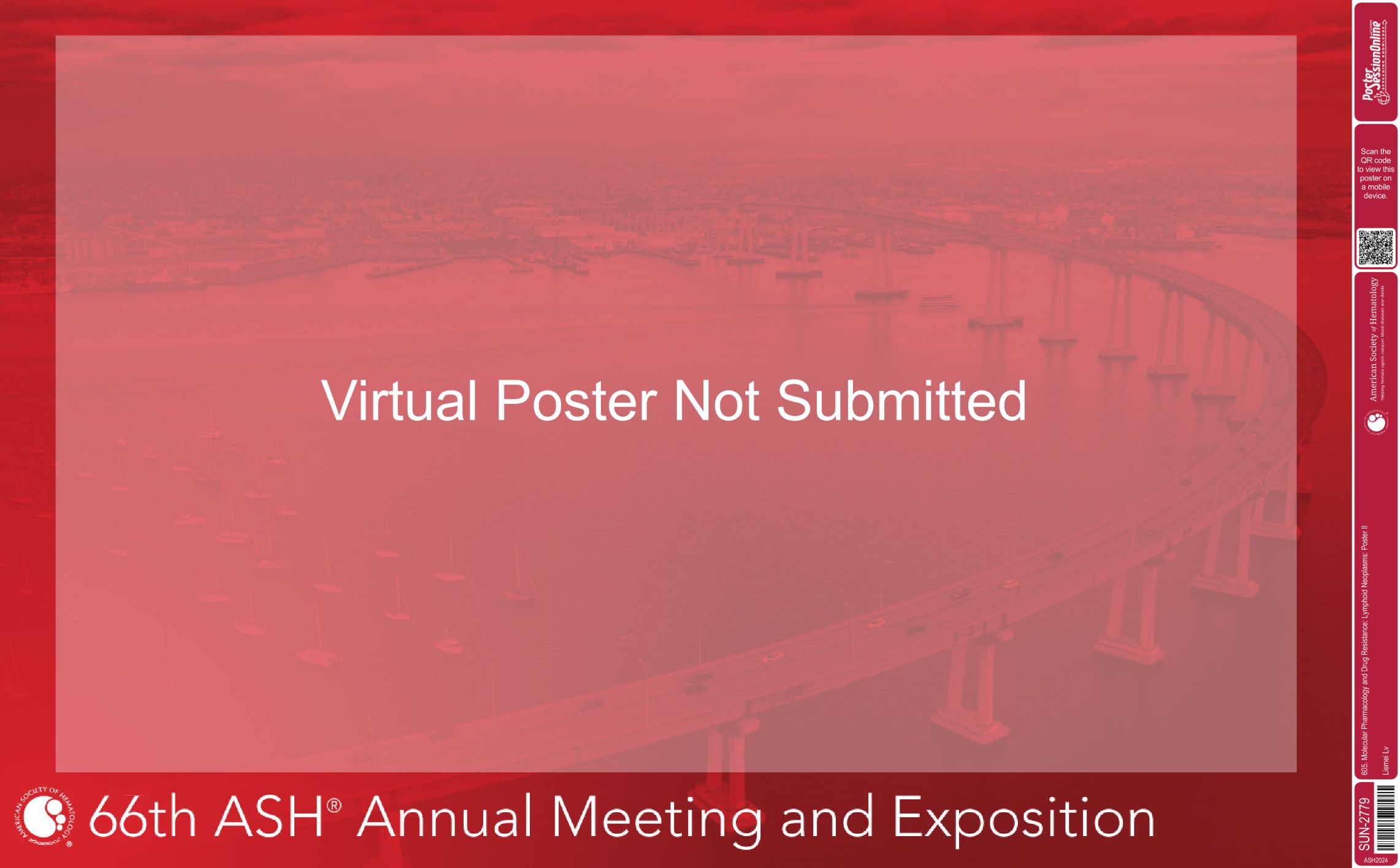
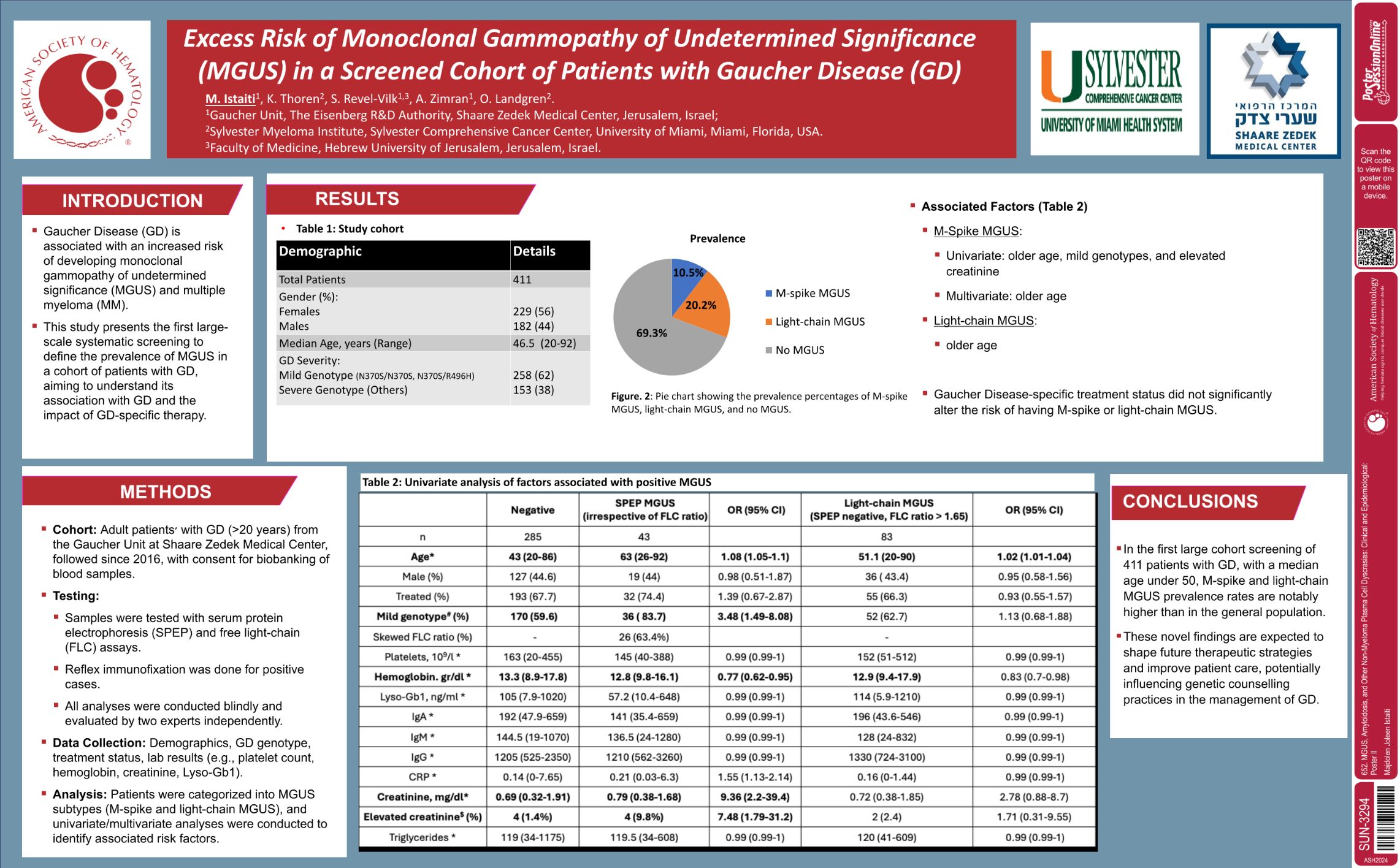
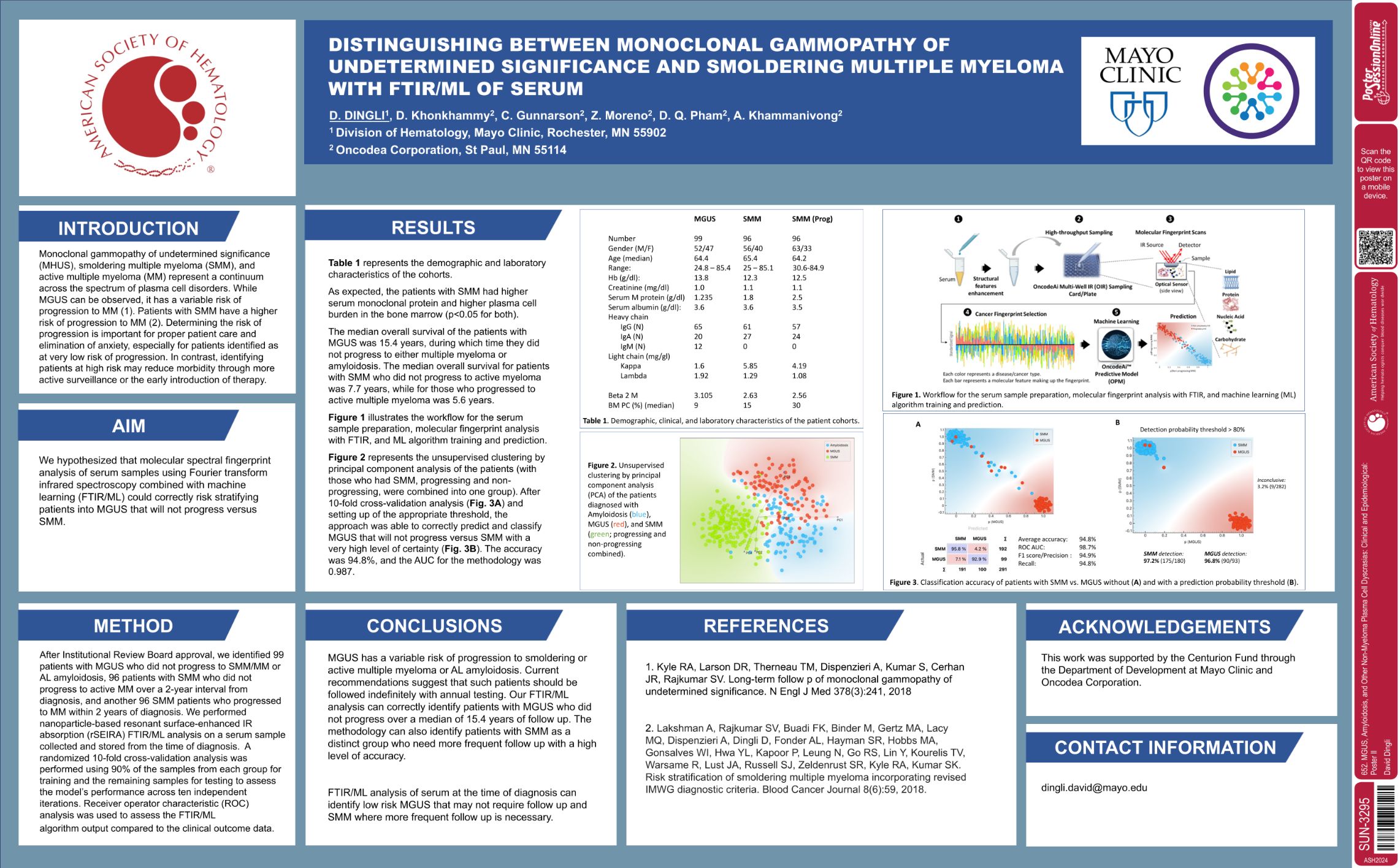
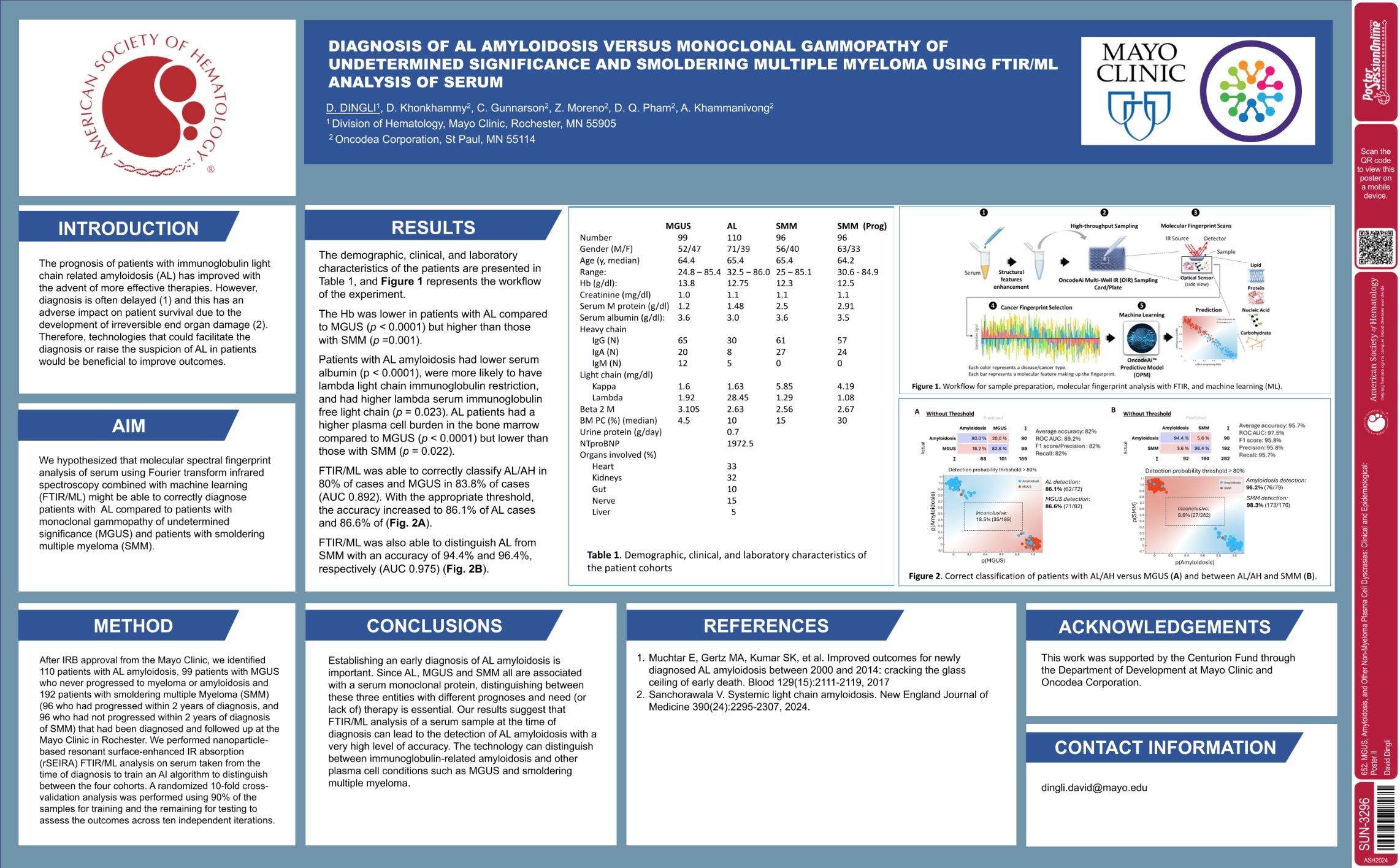
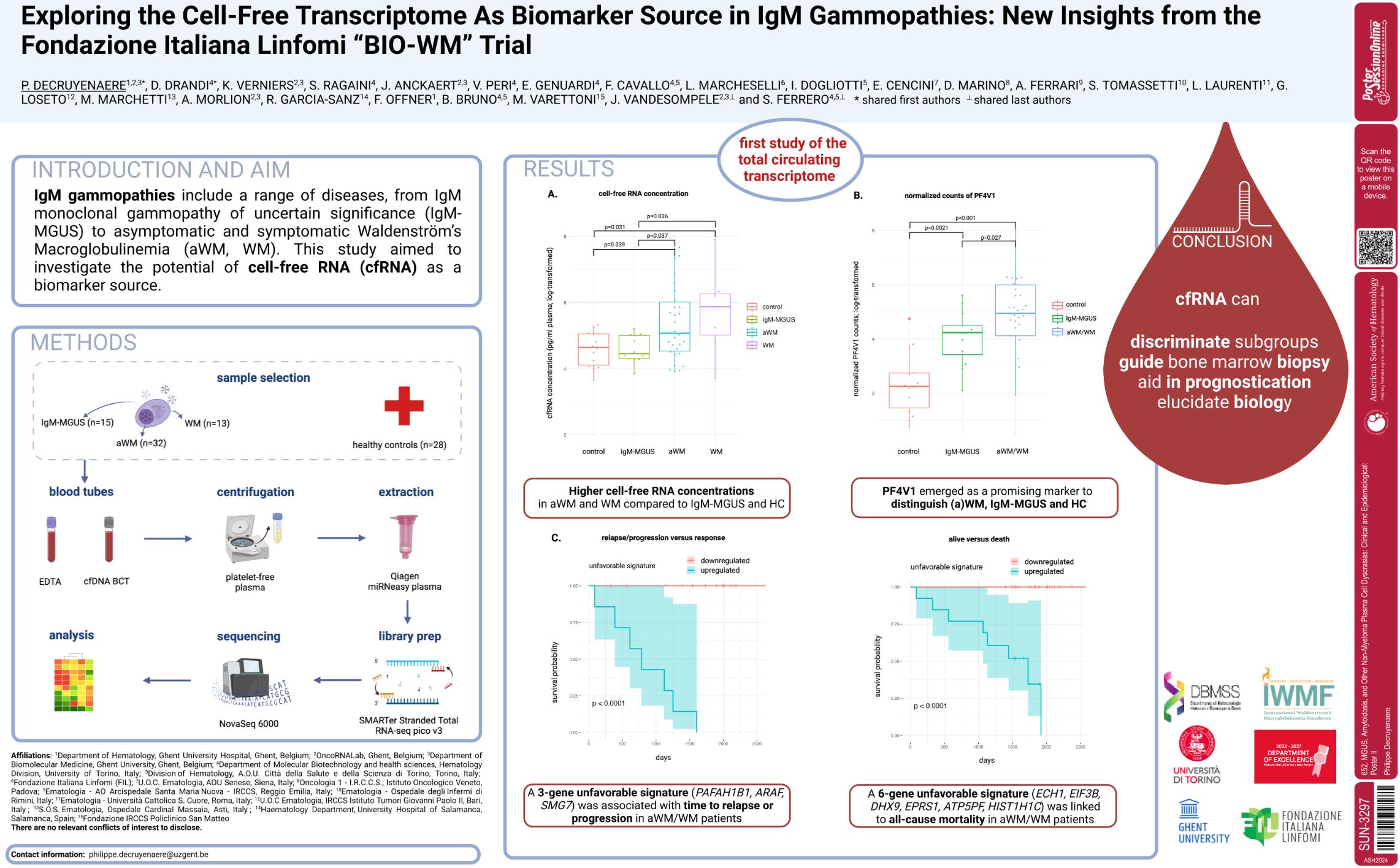
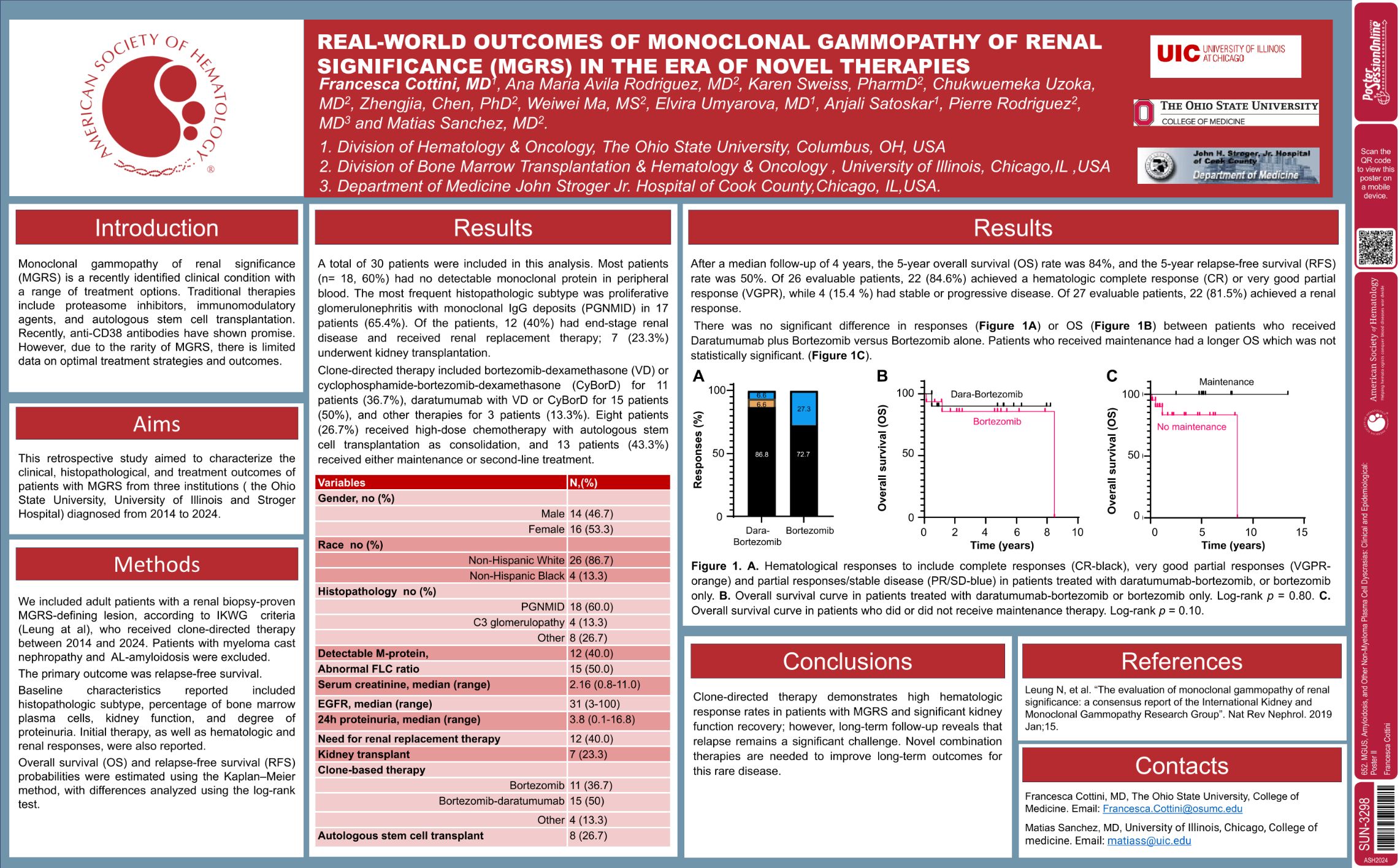
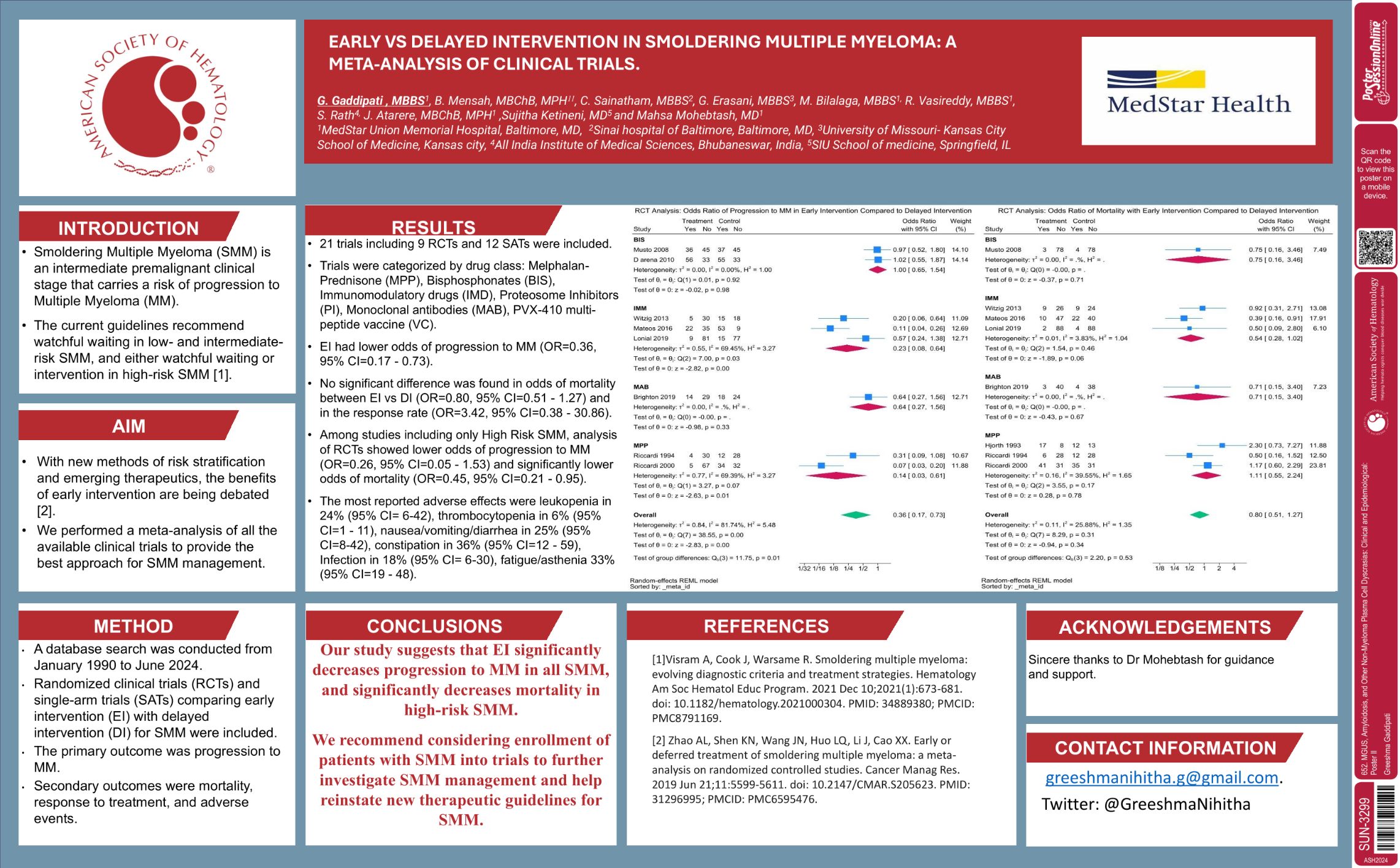
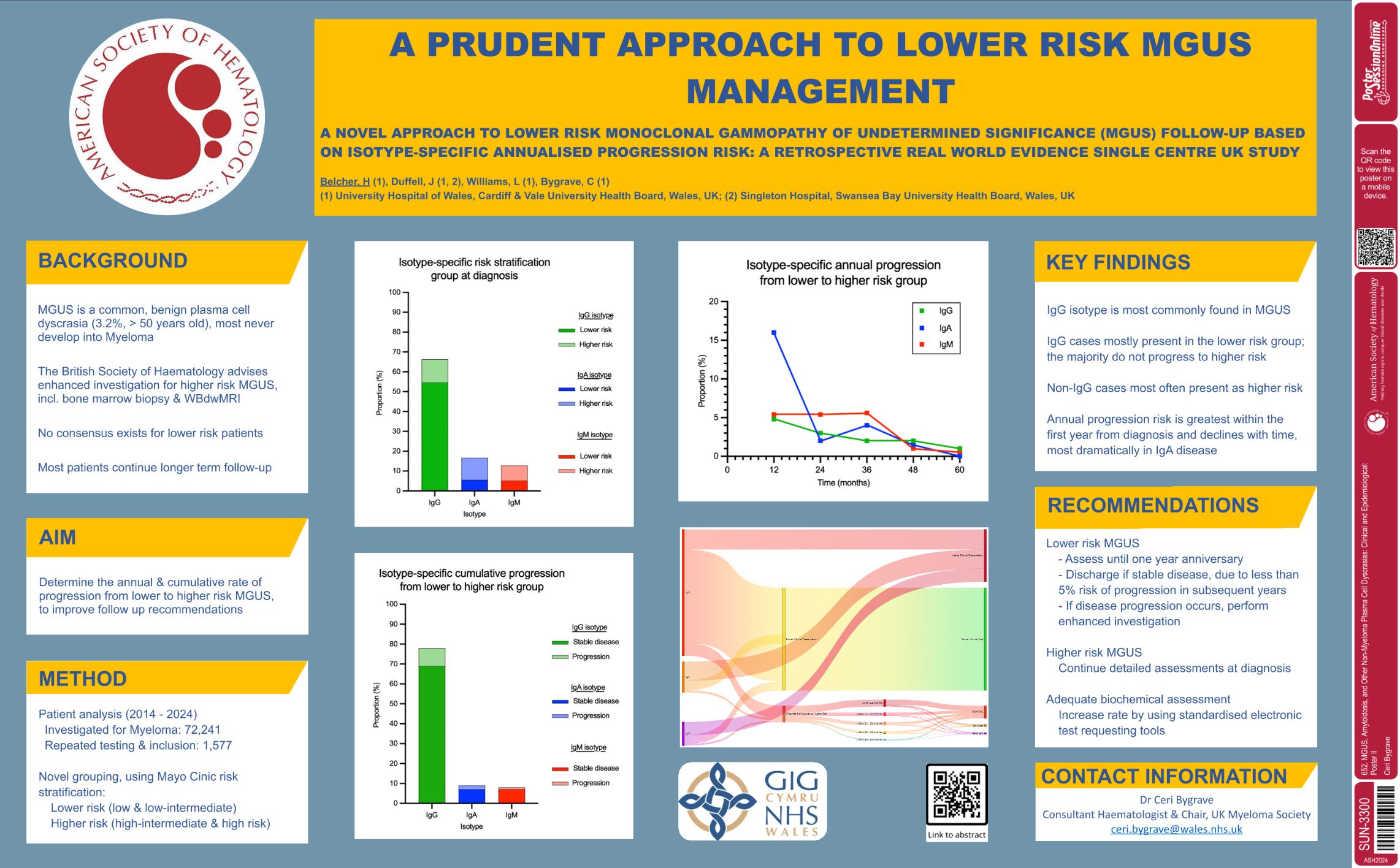
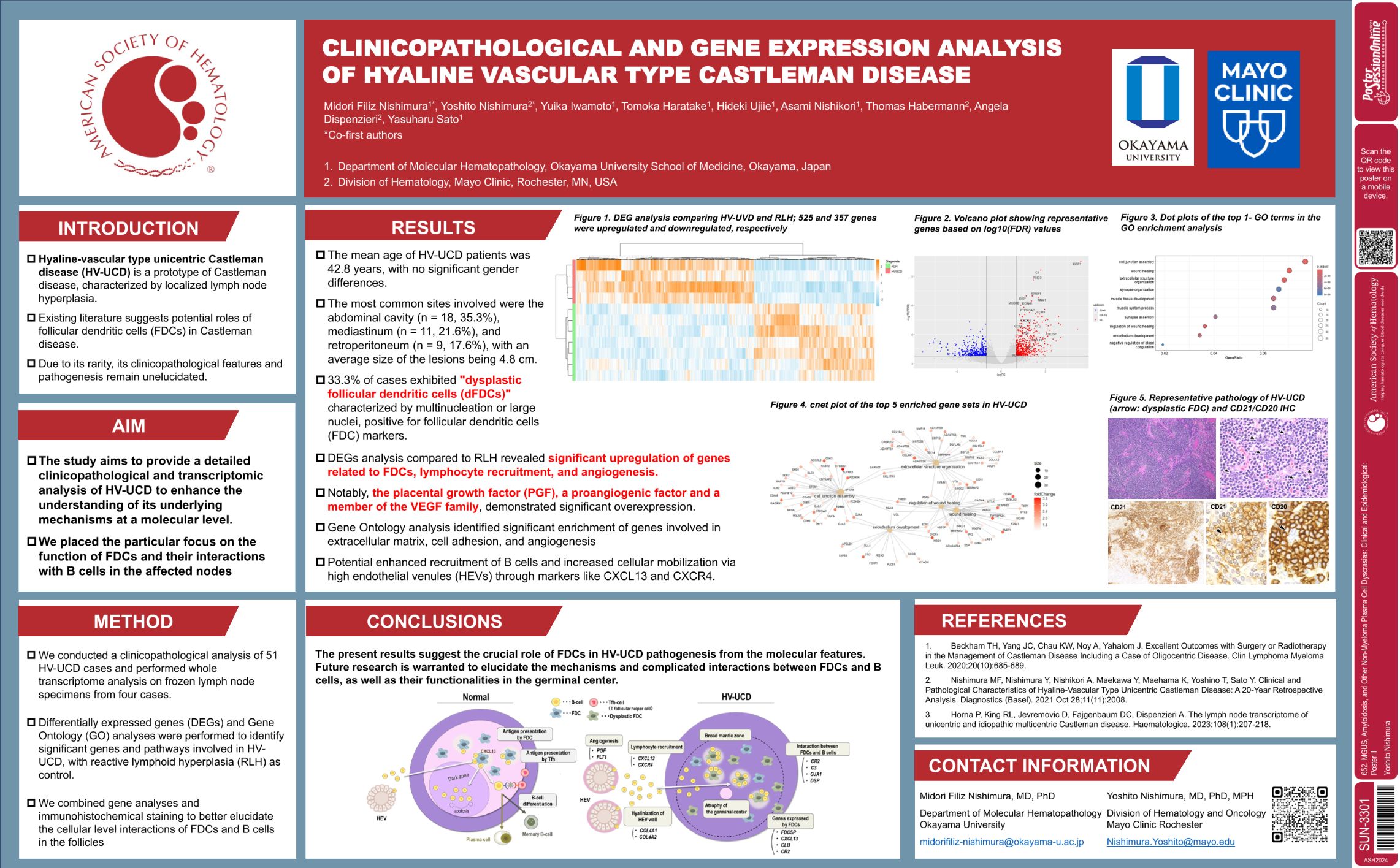
| Voltage-Dependent Anion Channel 2 Controls Mitochondrial Priming through BAK Stabilization in Multip.. | Ophélie Champion | 651. Multiple Myeloma and Plasma Cell Dyscrasias: Basic and Translatio.. | |
| A CD38xCD28 Costimulatory Bispecific Antibody Demonstrates Potent Preclinical Combinatorial Activity.. | Kara Olson | 651. Multiple Myeloma and Plasma Cell Dyscrasias: Basic and Translatio.. | |
| IMiDs and Celmods Enhance Antigen Presentation Via MHC Class 1 – a Potential Novel Immunostimulatory.. | Shannon Martin | 651. Multiple Myeloma and Plasma Cell Dyscrasias: Basic and Translatio.. | |
| Circular RNA Profiling Using High-Accuracy Long-Read Nanopore Sequencing of Multiple Myeloma Cell Li.. | Maria Papatsirou | 651. Multiple Myeloma and Plasma Cell Dyscrasias: Basic and Translatio.. | |
| Functional Genomics Studies Decipher the Genetic Perturbations and Unravel Mechanisms of Response/Re.. | Torsten Steinbrunn | 651. Multiple Myeloma and Plasma Cell Dyscrasias: Basic and Translatio.. | |
| Novel NOTCH1 Effector NFIL3 Is a Therapeutic Target to Combat Drug Resistance and Improve Patient Ou.. | Wen-Hui Cheng | 651. Multiple Myeloma and Plasma Cell Dyscrasias: Basic and Translatio.. | |
| Targeting the PI3K/AKT Pathway and Fatty Acid Synthase in AL Amyloidosis: Mechanistic Insights and T.. | Oshrat Hershkovitz-Rokah | 651. Multiple Myeloma and Plasma Cell Dyscrasias: Basic and Translatio.. | |
| Uncovering the Tumor Antigen Landscape in Patients Undergoing Dendritic Cell/Myeloma Fusion Vaccine .. | Dimitra Karagkouni | 651. Multiple Myeloma and Plasma Cell Dyscrasias: Basic and Translatio.. | |
| Role of Ras-Related C3 Botulinus Toxin Substrate 1 in p53-Related Proliferation and Drug Sensitivity.. | Ikuko Matsumura | 651. Multiple Myeloma and Plasma Cell Dyscrasias: Basic and Translatio.. | |
| Targeting of the CD161 Inhibitory Receptor Enhances Bone Marrow-Resident Memory CD8+ T Cell-Mediated.. | Liwen Wang | 651. Multiple Myeloma and Plasma Cell Dyscrasias: Basic and Translatio.. | |
| Single-Center Retrospective Analysis of Autologous Stem Cell Transplantation for Patients with Syste.. | Kodai Kunisada | 652. MGUS, Amyloidosis, and Other Non-Myeloma Plasma Cell Dyscrasias: .. | |
| The TEMPI Syndrome: A Monoclonal Gammopathy of Clinical Significance Driving Erythropoietin Producti.. | David B. Sykes | 652. MGUS, Amyloidosis, and Other Non-Myeloma Plasma Cell Dyscrasias: .. | |
| Excess Risk of Monoclonal Gammopathy of Undetermined Significance (MGUS) in a Screened Cohort of Pat.. | Majdolen Joleen Istaiti | 652. MGUS, Amyloidosis, and Other Non-Myeloma Plasma Cell Dyscrasias: .. | |
| Distinguishing between Monoclonal Gammopathy of Undetermined Significance and Smoldering Multiple My.. | David Dingli | 652. MGUS, Amyloidosis, and Other Non-Myeloma Plasma Cell Dyscrasias: .. | |
| Diagnosis of AL Amyloidosis Versus Monoclonal Gammopathy of Undetermined Significance and Smoldering.. | David Dingli | 652. MGUS, Amyloidosis, and Other Non-Myeloma Plasma Cell Dyscrasias: .. | |
| Exploring the Cell-Free Transcriptome As Biomarker Source in IgM Gammopathies: New Insights from the.. | Philippe Decruyenaere | 652. MGUS, Amyloidosis, and Other Non-Myeloma Plasma Cell Dyscrasias: .. | |
| Real-World Outcomes of Monoclonal Gammopathy of Renal Significance (MGRS) in the Era of Novel Therap.. | Francesca Cottini | 652. MGUS, Amyloidosis, and Other Non-Myeloma Plasma Cell Dyscrasias: .. | |
| Early Versus Delayed Intervention in Smoldering Multiple Myeloma: A Meta-Analysis of Clinical Trials | Greeshma Gaddipati | 652. MGUS, Amyloidosis, and Other Non-Myeloma Plasma Cell Dyscrasias: .. | |
| A Novel Approach to Lower Risk Monoclonal Gammopathy of Undetermined Significance (MGUS) Follow-up B.. | Ceri Bygrave | 652. MGUS, Amyloidosis, and Other Non-Myeloma Plasma Cell Dyscrasias: .. | |
| Clinicopathological and Gene Expression Analysis of Hyaline Vascular Castleman Disease | Yoshito Nishimura | 652. MGUS, Amyloidosis, and Other Non-Myeloma Plasma Cell Dyscrasias: .. | |
Abstract
Thunderstorm-related asthma in patients sensitised to olea europaea pollen: twenty emergency department visits for asthmatic symptoms in one single day Losappio, Laura1; Heffler, Enrico2; Falco, Antonio1; Contento, Francesco1; Cannito, Cosimo1; Rolla, Giovanni2 1"Dimiccoli" Hospital, Emergency Department, Barletta, Italy; 2University of Torino - AO Mauriziano "Umberto I", Allergy and Clinical Immunology, Torino, Italy
Background: Associations between thunderstorm and asthma morbidity have been reported in several countries. Common to all epidemics of thunderstorm-related asthma is a significant increase in atmospheric allergen load during and immediately after a thunderstorm. Sensitization to Alternaria species or to grass and parietaria pollens has been suggested to play a key role in thunderstorm-related asthma. The only reported event of thunderstorm-related asthma in Mediterranean area was attributed to sensitization to parietaria pollen.
Method: here we describe a series of 20 patients who presented to Emergency Department in Barletta (94,000 inhabitants), Puglia (Italy) for sudden and severe asthmatic symptoms between May 27th and 28th 2010 (from15:36 to 5:02), immediately after a violent thunderstorm which occurred following a very hot morning (mean temperature: 29°C). All the patients have been subsequently visited by an allergist and underwent allergological work-up which included skin prick tests and a careful clinical history. Local pollen counts were available.
Result: Between May 10th and June 10th 2010, 86 Emergency Department asthma visits were recorded, 20 of them during the study day. Patients' mean age was 44.25 +/- 18.5 years (range: 9-81), 8/20 females, 2 smokers, 16 with a previous history of known respiratory allergy. Only two patients regularly took anti-asthma drugs. All 20 patients were sensitized to Olea europaea pollen, 7 of whom were monosensitized. Ten patients were sensitized to grass, 7 to parietaria, 5 to compositae, 5 to cypress, 5 to house dust mites, 3 to dog and 1 to cat danders. No patient was sensitized to Alternaria. Mean pollen count was 17 granules/m3 for Olea europaea, 6 granules/m3 for grass pollen.
Conclusion: This is, in our knowledge, the second epidemic of thunderstorm related asthma described in Mediterranean area and the first one in which sensitization to Olea europaea played a key-role. In conclusion, our report indicates that thunderstorm asthma may involve different allergens (not only fungal spores and grass or parietaria pollen) in different geographic areas, depending on the seasonality of thunderstorms and allergenic pollen.